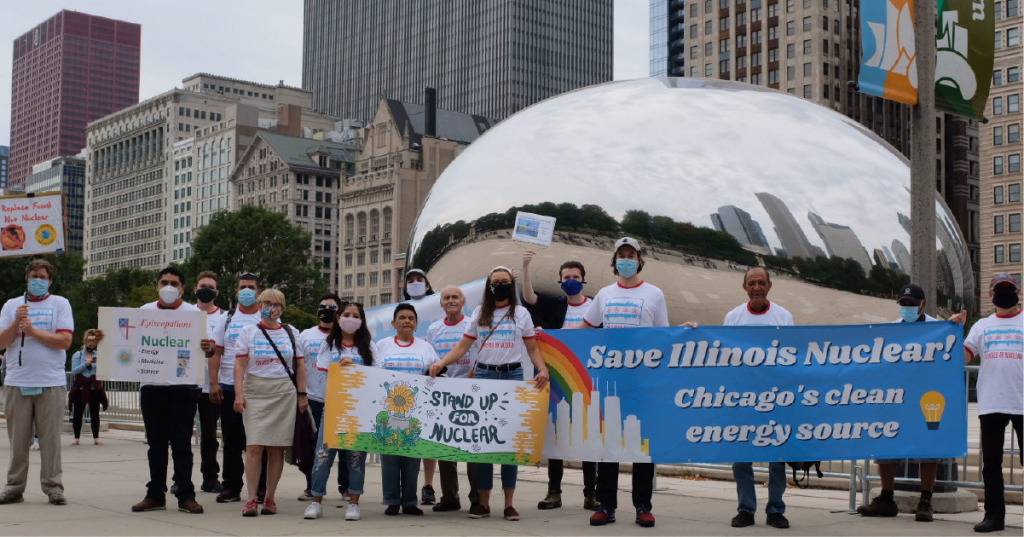-
 What does a biker rally in Morris have to do with environmentalists marching from The Bean to the Chicago River? They are two fronts of the same battle that began when Exelon announced the premature shutdown of Byron and Dresden nuclear power plants.
What does a biker rally in Morris have to do with environmentalists marching from The Bean to the Chicago River? They are two fronts of the same battle that began when Exelon announced the premature shutdown of Byron and Dresden nuclear power plants.
Illinois is blessed with one of the highest concentrations of clean power anywhere in the world, with three of its six nuclear plants located within a 25 mile radius. And no other country with this concentration of nuclear power has their plants operating as well as the ones in Illinois.
 Despite this, Illinois is in serious danger of losing a large share of its nuclear fleet. Four of the plants are located within the PJM interconnection, which stretches from Baltimore to Chicago and unites under one set of rules all different energy types without rewarding carbon-free nuclear for its outstanding performance. Even though Exelon so far has only announced that Byron and Dresden are on the chopping block, all of these plants would be forced to close for the same underlying reasons in the next few years.
Despite this, Illinois is in serious danger of losing a large share of its nuclear fleet. Four of the plants are located within the PJM interconnection, which stretches from Baltimore to Chicago and unites under one set of rules all different energy types without rewarding carbon-free nuclear for its outstanding performance. Even though Exelon so far has only announced that Byron and Dresden are on the chopping block, all of these plants would be forced to close for the same underlying reasons in the next few years.
The state’s leaders have failed to take preventative action to protect our nuclear plants from PJM interconnection’s market failure. Democrats have been caught in the trance of weather-dependent wind and solar, which cannot reliably keep the lights of Chicago on. Republicans dogmatically oppose government intervention in the operation of markets, letting historically-cheap natural gas push nuclear off of the grid.
There is nothing forcing these plants to retire prematurely from a technical perspective. Not the concrete, not the steel, not the employees — nothing. The only things threatening 4.7 gigawatts of clean, base load capacity with retirement decades early are bad market rules and a lack of decisive leadership.
The laborers, plant employees, and business owners who attended the Ride For Our Reactors this past weekend know what’s at stake. Nuclear plants provide high-skill, high-wage union jobs and act as economic engines for the communities they’re in. “Dresden nuclear power plant pays $24 million in tax to our economy to fund our schools, to fund our libraries, to fund our townships, to fund Grundy county,” said State Senator Sue Rezin at the ride’s endpoint, Fat Daddy’z in Seneca.
The environmentalists who dropped banners off the Michigan Avenue bridge on Sunday understand that what bikers in Grundy county are producing keep Chicago one of the cleanest cities in the world. Nuclear power is the backbone of Illinois’s clean energy, producing nearly 90 percent of the state’s carbon-free electricity. If Dresden and Byron are allowed to close, they will be replaced by natural gas at an estimated cost to ratepayers of $480 million per year according to a recent report from Brattle.
This fight is the future of good union jobs in local communities and clean, high-powered cities all at once. Illinois needs both to flourish in the 21st century and become a low-carbon manufacturing hub of the future. These nuclear plants are our inheritance: we can build incredible things with it or squander it for nothing.
Madison Czerwinski is the Executive Vice President of Environmental Progress, a research and policy organization fighting for clean power and energy justice to achieve nature and prosperity for all
Do you like this page?














